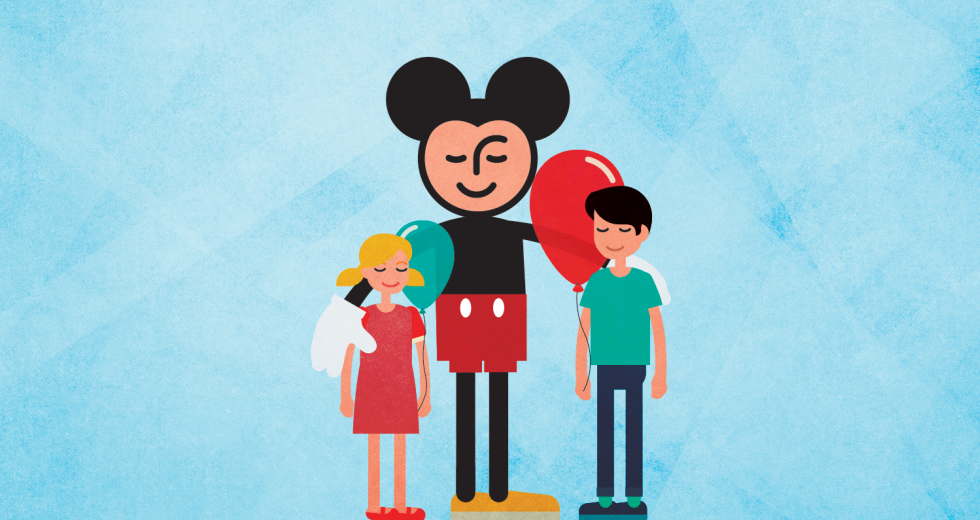In Disneyland, founder Walt Disney was famously known to “walk the park,” ensuring that employees kept the park safe and clean, and treated guests courteously while creating an amazing and unequaled experience. He was known to get on his knees and look through windows for a child’s perspective and to go on rides to understand what his guests experienced. Walt profoundly understood that Disneyland’s winning strategy was to create lifelong happy and loyal customers. All companies would do well to be as customer-driven in determining what strategy they will use to ensure their own success.
Doug Lipp, of Fair Oaks, author of the book Disney U and former trainer at Disney University, writes about Walt taking a ride on the Jungle Cruise — that fun-filled adventure where hippos rise unexpectedly out of the water as the boat floats by. When the boat returned to the dock, Walt was furious. The boat’s “skipper” followed the safety guidelines and recited his lines perfectly. But what infuriated Walt was that he recited the lines; he didn’t feel the lines. According to the book, he angrily chastised the supervisor of the Jungle Cruise, telling him that he wanted “‘the skippers to act as if every trip on the Jungle Cruise was their first trip. I want them to be surprised when the hippos suddenly rise out of the water. The skippers need to be as surprised as the guests.’”
In those early days of Disneyland, Walt hired Van France to establish Disney University and hire and train the “cast” (employees) that would bring the theme park to life. France reinvented the training and development of employees with his carefully crafted Four Keys (now more commonly known as Crystal Clear Priorities, aka CCPs).
The CCPs helped propel the Disney organization to the iconic global organization it is today. They were and continue to be simple and clear, and serve as a foundation to everything the Walt Disney Company creates. And, like a bouillon cube, they can be metaphorically carried and dropped anywhere in the organization and employees will understand exactly how to execute effectively for their area.
Disney’s CCPs to this day are: safety, courtesy, show and efficiency — always in that order. Efficiency, which comes last, is the numbers portion of the business: ticket sales, merchandising, restaurants, etc. When the first three priorities are executed flawlessly, efficiency will exceed expectations in the sustainable form of enthusiastic and loyal guests and employees.
Yet, notice that efficiency is the last area of focus. The next time you navigate the infuriating maze of telephone prompts when calling a company, think of Disney’s CCPs and wonder if your current frustration might be tied to efficiency being its first, and maybe only, priority.
France and Walt are long gone now, as are a long line of successive and controversial leaders who replaced them over the years. Leadership comes and goes, as do those leaders’ priorities — so embedding successful organizational priorities through leadership changes is key. While Disney’s safety record remains astonishingly good considering the number of guests it serves worldwide, the recent tragedy of an alligator snatching a toddler from a man-made lake at a Disney resort is a stark reminder to maintain focus on priority one: safety.
But what do Disney’s CCPs have to do with strategy? In a thought-provoking article for Harvard Business Review, titled “The Big Lie of Strategic Planning,” author Roger Martin, professor in the Rotman School of Management at the University of Toronto, makes the excellent point that while strategic planning often focuses on initiatives and the plans to make them happen, leadership “… tends to focus on how to squeeze more profit out of existing revenue rather than how to generate new revenue.”
His main point is that strategic plans should be about the customer; who they are, what they want and how they are changing. Because, while a company can execute a plan, the customers bring in the revenue. “There’s a simple reason why revenue planning doesn’t have the same desired result as cost planning,” Martin writes “For costs, the company makes the decisions. But for revenue, customers are in charge. Except in the rare case of monopolies, customers can decide of their own free will whether to give revenue to the company, to its competitors, or to no one at all.” Disney and France wound all of their strategic energies back to Disney customers, and therefore the revenue they might bring.
Keep the strategy statement simple and focus leadership on influencing customers by understanding customers. To create a better strategy for your business, start by asking some questions: Who are your customers? What do they care about in terms of your product? How might their needs and desires evolve? What potential customers exist and why aren’t you reaching them? What does the future competitiveness of your market look like? I am always surprised at how often these types of strategic questions arenot asked.
Disney’s CCPs brilliantly answer the strategic plan of customers bringing in the revenue. By paying solid attention to its customers, Disney pulls the unpredictability of future revenue into a more predictable and sustainable space. So what is the equivalent of Disney’s CCPs in your organization?




Comments
The one thing that always impresses about all Disney employees, in commenting on the company, they always use the pronoun "We." It's a subtle but powerful display of loyalty.